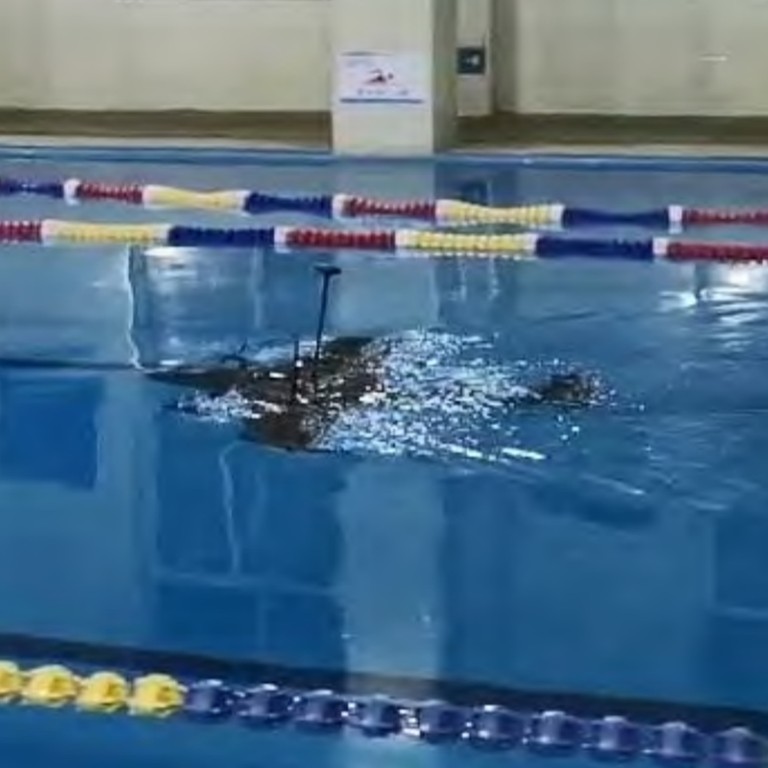
Chinese scientists develop flying unmanned submarine
- Propeller-driven drone has civilian and military applications, including inspecting underwater mines
- This type of vessel is one of the cheapest and most effective methods for taking down the defence system of an air carrier fleet, according to researcher
A research team from eastern China say they have built and tested a prototype submarine drone that can fly in the air at high speed.
Driven by four propellers, including a pair at the front that tilt, the drone can approach an underwater target slowly and linger in one area for a long time, they said.
Chinese scientists’ new gravity detector could be used in submarine navigation
Two large wings that fold over its back can extend when the drone reaches the surface of the water, allowing it to fly at a speed of 120km/h (74.6mph), about twice as fast as an ordinary drone powered by rotor blades.
The drone “consumes little energy when cruising in fixed-wing mode, so it can perform some fast, long-range missions in the air”, said professor Ang Haisong, lead project scientist with the Nanjing University of Aeronautics and Astronautics in a paper published in the peer-reviewed Unmanned Systems Technology in June.

A researcher studying similar technology at Northwestern Polytechnical University in Xian, Shaanxi province, said China was developing numerous types of “transmedia vessels” that could travel in both air and water.

A transmedia vessel launched from a distance of 100km (62 miles) had a survival rate of nearly 100 per cent if it could fly at a speed of more than 150km/h, Ji’s team said in a paper published in the Chinese journal Electronics Optics & Control last month.
This type of drone “can achieve efficient strikes against the enemy’s key targets. It will surely become a powerful supplement to the Chinese navy’s existing equipment combat methods and tactics,” Ji’s paper said.
The flying submarine developed by Ang’s team has an airbag in its belly that can be filled with water to adjust buoyancy so it can stay at a given depth without making noise with its propellers.
When cruising in water with its wings folded, its streamlined body resembles that of a typical submarine, allowing for less drag and higher mobility.
Does China’s new drone mother ship have potential as a military vessel?
Ang’s team built two scaled-down prototypes with wing spans of about two metres, according to their paper.
The biggest challenge occurred during take-off. According to Ang’s team, if the vessel rises directly out of the water, the take-off process is unstable because of surface waves and the drone’s simultaneous interaction with air and water.
To fix this, they developed a complex control mechanism so that the submarine can glide on the waves before lifting.
The idea of a flying submarine has been around since the 1920s.
Soviet engineering student Boris Ushakov proposed a submersible aircraft that could scout for ships and then dive into the water to ambush them with torpedoes. But the Red Army ditched the design because the underwater components made the aircraft too heavy.
In the 1960s, American defence contractor Donald Reid built the first flying submarine, but it could only stay in the air briefly because of insufficient power.
The US military has reportedly funded numerous research projects to develop manned or unmanned submarine aircraft for covert operations, but most of the projects were postponed because of engineering challenges.


